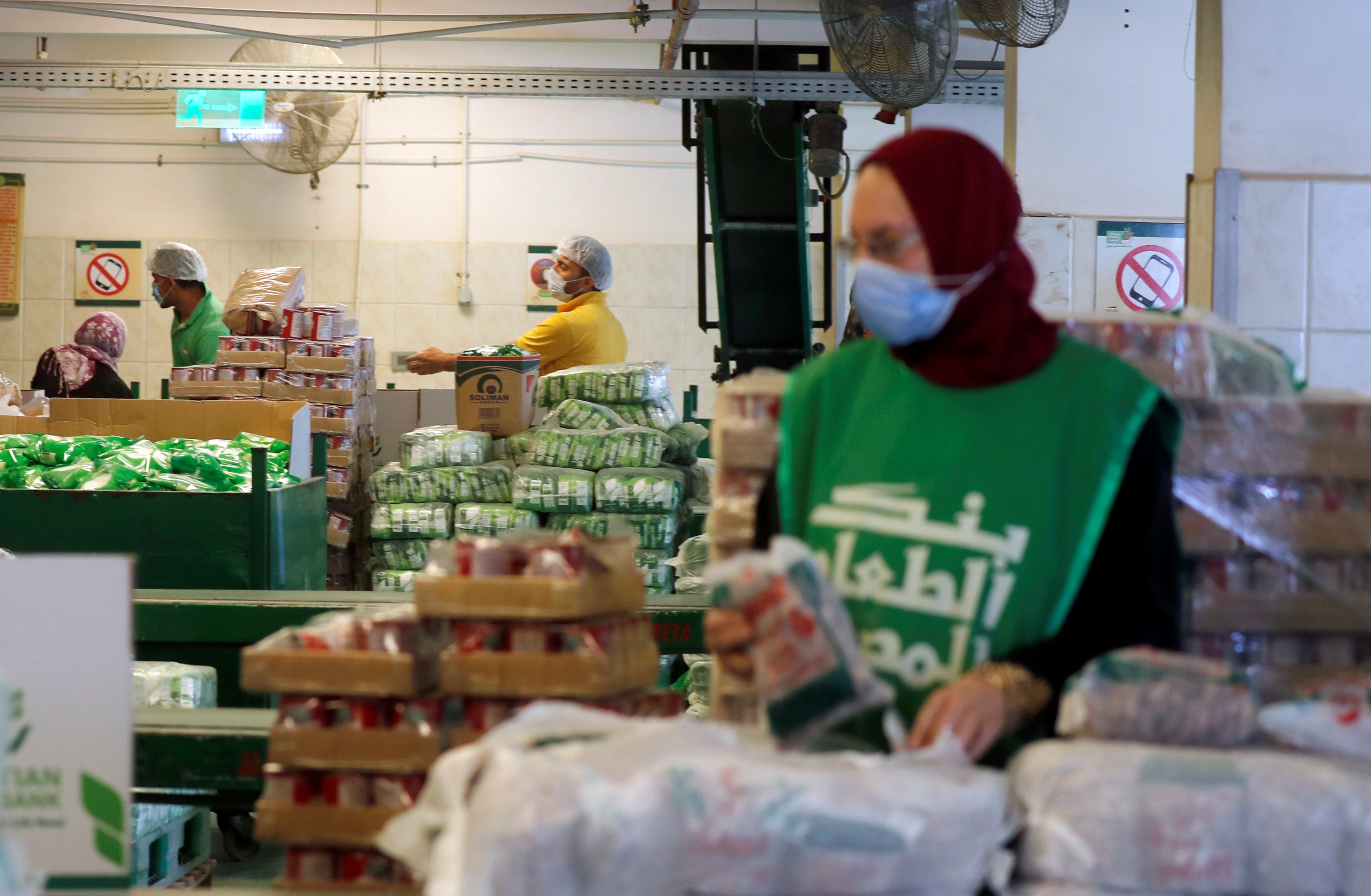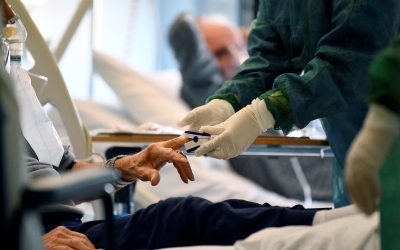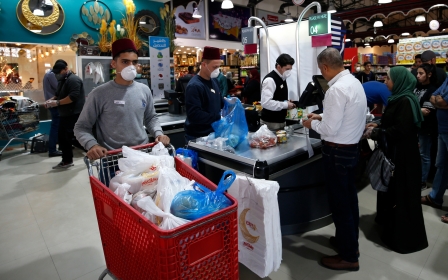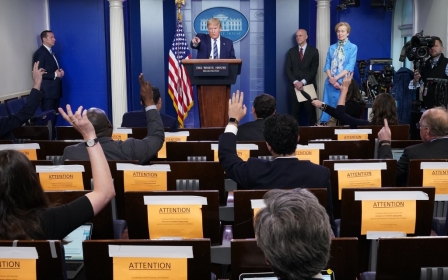Coronavirus in the Arab world: Can survival turn to recovery?
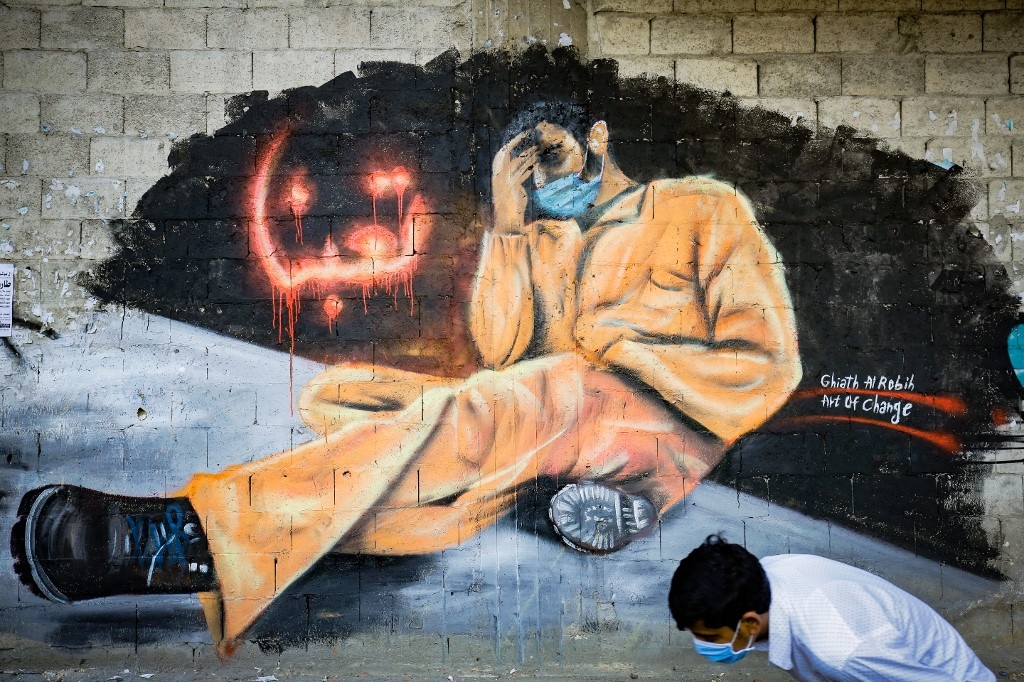
The full force of the coronavirus pandemic might not yet have hit the Arab world, but economic contagion certainly has.
Oil prices are at their lowest in two decades, the bottom has fallen out of the tourism sector, and industries are reeling from supply-and-demand shocks as trade falters and lockdowns keep consumers at home.
We already know that the impact on the world's economy will be profound and long-lasting, on a scale not seen since the Great Depression. We also know that stable, complex and diverse economies will cope and handle future shocks much better, as they are more adaptable and resilient.
Economic shocks
Arab economies, however, tend to score poorly on at least one of those three criteria. Despite efforts to diversify - most recently after the 2014 oil price collapse, when countries such as Oman, Kuwait and Saudi Arabia launched ambitious long-term reform plans - success has been muted.
New MEE newsletter: Jerusalem Dispatch
Sign up to get the latest insights and analysis on Israel-Palestine, alongside Turkey Unpacked and other MEE newsletters
An ongoing dependence on oil and gas, high unemployment, rapidly growing populations and wide inequality mean most economies in the region are highly vulnerable to the economic shocks now reverberating around the globe.
Healthy reserves and skilled manpower mean that they can lead on economic restructuring and much-needed regional investment efforts, especially in low-income and war-torn states
Policymakers must take action to help industry and business ride out the immediate storm, but they should also look ahead to recovery. This means building skills to stem the threat of long-term unemployment, and developing cooperation and diversity through industrial regeneration programmes that can play on regional strengths and ties.
As in other parts of the world, the widespread closure of production in Arab countries has caused heavy job losses, especially in small and medium-sized enterprises (SMEs). Informal-sector workers and the most vulnerable, including women, have been hit hardest.
Places such as Sudan, Yemen and Palestine are expected to see a stark drop in remittances as migrant workers are forced to return home.
For oil exporters, the pandemic and the collapse in oil prices have delivered a double shock. The agreement on 12 April by OPEC and its partners to slash output in May and June by a record 9.7 million barrels a day looks unlikely to offset the continuing fall in demand.
But most Gulf producers, such as the UAE and Qatar, have deep pockets and have been able to roll out fiscal stimulus packages. Healthy reserves and skilled manpower mean that they can lead on economic restructuring and much-needed regional investment efforts, especially in low-income and war-torn states.
Weathering the crisis
Low-income oil importers, on the other hand, have few resources, poor infrastructure and high underemployment, combined in some cases with political instability. Facing a loss of remittances, they could struggle to maintain foreign trade if their supply of hard currencies runs dry.
Yet, the savings afforded to governments from the fall in oil prices and the drop in demand for heavily state-subsidised fuel could help to widen the social safety net at a crucial time. The oil glut presents an opportunity to shore up energy reserves and put scarce resources into productive investments with low labour costs.
This could lead to reconstruction, new jobs and fewer imports of basic and intermediate goods, helping to make these economies more resilient. Indeed, the more diversified countries, such as Lebanon, Morocco and Egypt, which already produce basic agricultural and manufacturing goods, are expected to weather the crisis better than some others in the long run.
The dizzying speed and scale of the shock to the global economy has seen governments dig deep into state coffers to ease the immediate financial pain. Most have aimed to shore up demand with state-backed cash and credit support for households and SMEs, by lowering the cost of utilities, by regulating the price of basic necessities and by safeguarding banks.
This doesn’t look much different from the response to the 2008 financial crisis, with “targeted” measures likely to take months to come through and much of the decision-making left to banks. But the current crisis is very different from the financial collapse of a decade ago.
The rapid spread of the virus has caused a massive shock to the real economy, hitting production, supply chains, trade, consumption and labour.
The financial pain is a symptom, not the cause, and the road to recovery will likely be longer and slower.
Boosting cooperation
Short-term cash injections are essential, but on their own, they will not help industries to escape the crisis, nor help to diversify economies to make them more resilient to supply disruptions or a collapse in demand.
First, firms and industries need to survive. This means incentives, such as moratoria on rent and debt payments. Firms would also benefit from subsidies to purchase machinery and equipment, tax credits, and grants for wages and health insurance costs to stem job losses.
This is already happening in Bahrain, where the government is covering private-sector salaries, waiving water and electricity costs, increasing liquidity for SMEs, restructuring their debt and reducing bank interest rates.
Setting up emergency solidarity funds, as in Lebanon, would go some way to offsetting the hole in the social safety net, while banks should be encouraged to be flexible with SMEs and other clients to give them breathing space.
A cut in tariffs, taxes and customs duties would also help, as would providing food aid to offset the effects on the poorest.
Looking further ahead, governments have the opportunity to cooperate in ways that complement each country’s advantages and boost regional links. Disruption to global supply chains offers a chance to rethink what can be produced where, and by whom.
For example, more solar panels could be produced in the region, and neighbouring countries could turn to each other for food imports, boosting regional trade. Expanding internet and other IT infrastructure would stimulate social and economic activity.
Mass public buy-in
Economic regeneration programmes could promote the manufacturing of sanitary and medical equipment, and basic construction materials. Reconstruction programmes could build and upgrade water-recycling plants and distribution networks, manufacture farming equipment, build better transport links, invest in fisheries and develop solar energy technology.
Arab leaders have the chance to opt for win-win relationships, turning structural weaknesses into opportunities
For such restructuring to be feasible, governments would need mass public buy-in. The first step to achieving this would be to provide cash transfers to the most vulnerable groups to avert a humanitarian disaster and ensure health, security and safety.
Then, there needs to be a clear focus on skills, especially for women and young people, and government support for startups and entrepreneurial activities.
Despite the ravages of Covid-19, by developing local production, countries can create jobs and boost income in a way that promotes both national interests and regional stability. Arab leaders have the chance to opt for win-win relationships, turning structural weaknesses into opportunities for sustained recovery, for the benefit of all.
A longer version of this article is published here.
The views expressed in this article belong to the author and do not necessarily reflect the editorial policy of Middle East Eye.
Middle East Eye delivers independent and unrivalled coverage and analysis of the Middle East, North Africa and beyond. To learn more about republishing this content and the associated fees, please fill out this form. More about MEE can be found here.


